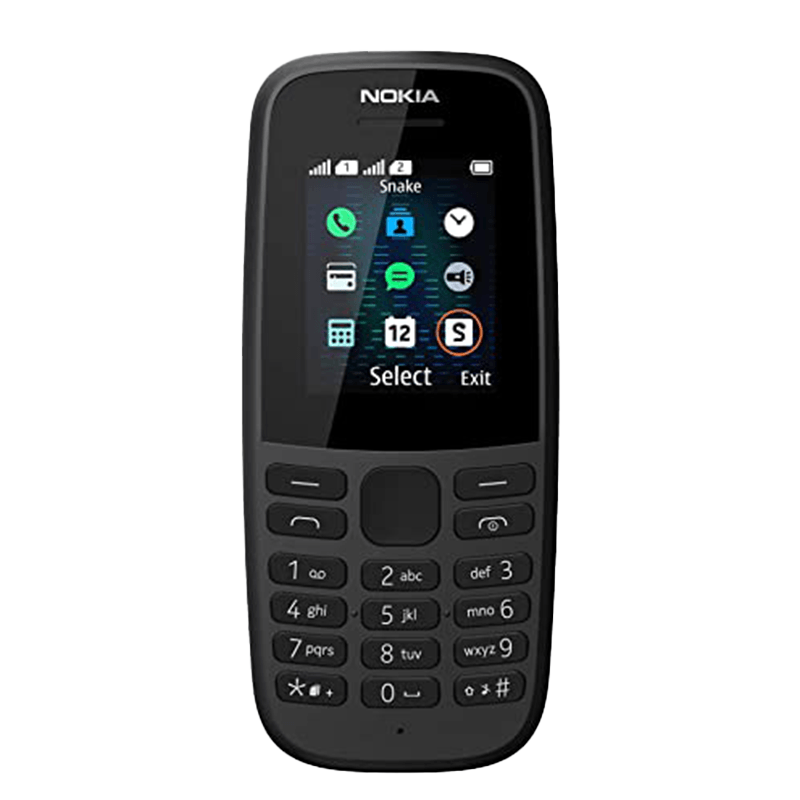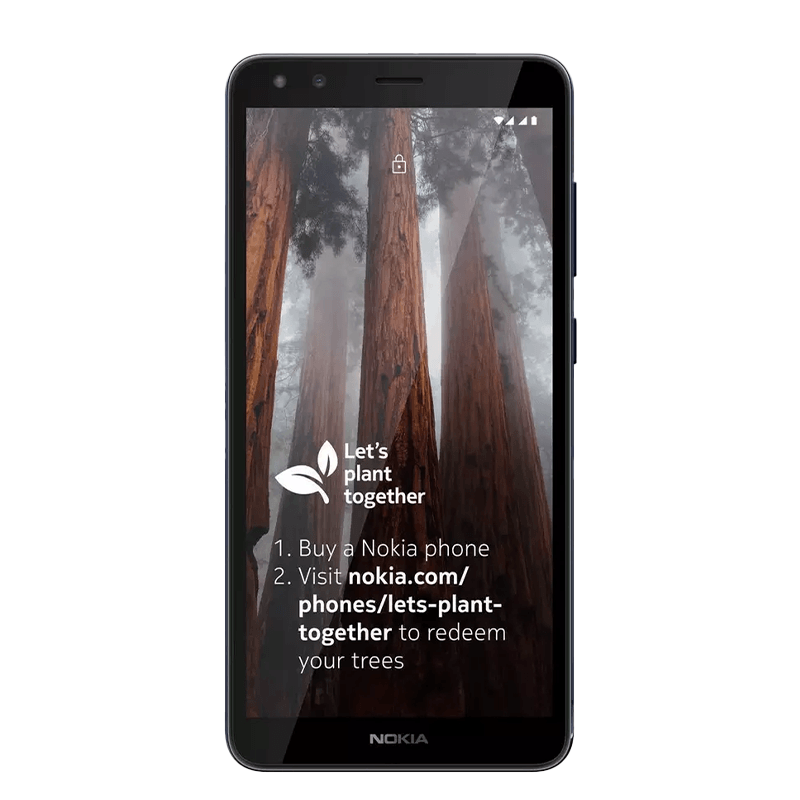A Guide To Buying Your Child Their First Phone
Wait Until They Have Some Independence
It can be tricky to know when to buy your child their first phone, but according to the experts, it’s best to wait until they reach secondary school – a time when they become more independent. “At around 11 years old is when most children are independent enough to be going to school on their own,” explains parenting expert and coach Gifty Enright. “This is also when they are mature enough to fully understand the conditions and the controls around the use of a phone. If you do want to give your child a phone before this age, I’d recommend a basic model which has fewer functions than a smart phone”. Al Ferguson, founder of Dadsnet agrees: “At around 11 or 12 is when they will benefit from using a phone. Of course, this will differ from family to family, but you should only give them a phone when there is a need for it, not a want. Present it as a tool rather than an entertainment system.”
Choose A Smart Phone, But Go Second Hand
Smart phones can cost hundreds of pounds, so it’s a good idea to choose a second-hand set which can be more cost effective and is less likely to get stolen. That said, a smart phone is a great option as it comes with advanced features that can help you track and monitor your child, explains child psychologist Dr Amanda Gummer. “Second-hand phones are an affordable option – just make sure they have been completely wiped before you give it to your child. Then, you can add parental control apps and ensure there’s a decent amount of security to make sure they’re not viewing things they shouldn’t be. It’s also a better option for the environment.” You might also want to consider getting insurance, depending how valuable the phone is, but it’s important to discuss this with your child first, so they still understand the important of looking after their device.
Weigh Up A Contract Versus Pay As You Go
When it comes to usage, you need to decide how and when your child is using their phone – if they are simply texting you to keep in contact then a pay-as-you-go phone might be sufficient, but if you think they are ready to navigate apps and social media, a contract will be more cost effective. “A pay-as-you-go phone helps to teach children to monitor their own usage to some extent, and helps teach them about the ‘cost’ of rewards – once the credit has been used, it’s finished for the month,” explains child psychologist Dr Alison McClymont. “However, this does present the concern of having no credit to call in an emergency, so you may need to agree with your child that they always keep an emergency top up card with them if you go down this route. It’s important to note that pay-as-you-go is not necessarily the most cost effective.”
If you’d rather be able to always contact them, a contract is a good option, and there are several child-friendly plans to know about, suggests Gifty. “O2, Tesco and EE all offer plans where you can block inappropriate content. With EE, you can have up to four people on the same family sharing contract which means you only get one bill, while Tesco allows you to cap usage, so your child doesn’t overspend on any extras.”
Download Useful Apps
Download the right apps to keep your child safe and monitor their screen time explains Gifty: “Here are some useful apps to know:
- Phone Clone – this app allows you to transfer all data between two phones, including contacts, call logs, messages, photos, apps and more. You can keep an eye on what they’re up to and have access to everything on their device in real time.
- Net Nanny – download this software to help keep your kids safe online. The app protects children from harmful content and reports their online searches. You can also use it to manage their screen time.
- Kaspersky Safe Kids – a great all-rounder, Kaspersky allows users to locate children via GPS, schedule screen time, block unwanted content and lock website categories like adult content and violence.
- OurPact – designed with busy families in mind, OurPact lets you manage up to 20 devices at once so you can customise each child’s profile based on their age. You can block websites and apps, monitor their screen time and see who they’re talking to online and over text.
- Google Family Link – this helps you create healthy digital habits. Parents can guide them to good content (like teacher-recommended apps), keep an eye on screen time, and track where they are.
- Qustodio – this app does it all, from tracking and setting time limits to monitoring who your child is calling and texting. You’ll receive regular reports of their phone usage and be alerted when something doesn’t look right.”
“There are lots of great apps out there for parents, but you shouldn’t put your trust in them 100%,” explains Al. “Instead, it’s about how you manage the phone practically, like setting screen time rules, teaching them about online safety and having honest, open conversations with them about who they’re talking to.”
Monitor Their Screen Time
One of the greatest challenges you’ll face is monitoring your child’s screen time. Most smart phones have in-built tools to help you do this, explains Alison. “Android phones have a feature called Digital Wellbeing where you can set timers and limit content, while Apple devices lets you restrict app usage – for example you could set a 30-minute time limit on WhatsApp or gaming apps.” However, it’s also important to discuss this with your child to ensure they understand why limits are in place, says Amanda. “You want them to learn healthy habits rather than enforcing usage/screen time. Sit down with them and agree on the rules so they know what the expectations are.”
If you have children of different ages, it’s important to make it clear that older children will have greater freedom, adds Alison. “If there is a wide gap in developmental age such as a ten-year-old and 16-year-old, younger children could interpret less screen time as unfair, as there is no tangible reason other than age difference. You must explain to your child that with age comes more responsibility and the older sibling is being trusted with more responsibility because of their maturity. I wouldn’t advocate to offer increased screen time as a reward, as it discredits the message that screen time should be limited to communication and education.”
Talk To Them About The Responsibility Of Having A Phone
“While today’s phones have myriad benefits, the internet can provide unfiltered access to negative or inappropriate things,” explains Alison. “It can be addictive, and promote depression, anxiety, or even radicalised ideas or dangerous behaviours that may not have been otherwise considered or accessed. Therefore, it’s imperative that you teach your child that the internet is a great thing when it is used for good, and extremely destructive when used for bad. Reinforce the idea that ‘the internet is forever’ as children may not understand the permanency of what they do, unless it is explicitly explained to them.” Before your child gets a phone, set some ground rules, says Amanda: “Discuss their behaviour and what happens if the rules are broken. Allow your child to have input into these, so they feel involved. You might also want to discuss the importance of protecting the phone from physical damage and who will be responsible for replacing or repairing it if this happens.”
“You should also discuss how to be respectful of other people’s privacy, when the use of the phone will not be appropriate, and how many hours they will be allowed per day,” adds Gifty. “Additionally, you need to agree what they will do if they come across something inappropriate or untoward behaviour online. You could even fill out a family agreement beforehand so everyone feels involved and understands the rules – you can find a template here.
Teach Them Good Phone Habits
To teach good phone habits, you need to advocate them yourself, and limit your screen time when you’re around your children. Often, phones encourage mirrored behaviour – if you pick up your phone, someone next to you (like your child) is more likely to do the same. So, it’s a good idea to guide them to online resources which teach them about phone etiquette and good habits. “TrendMicro has a cyber academy which involves a series of short videos that can be shown to young teenagers to explain healthy internet habits, data privacy, safety online and positive use of the internet”, suggests Alison. “However, bear in mind that your online behaviour and usage is their biggest guide. Are you guilty of oversharing on social media? Are you careful not to use the same password for every app or email? As a family, discuss the importance of positive internet and social media use and the negative impacts of it.”
For more information visit GiftyEnright.com, TheDadsNet.com, GoodPlayGuide.com and DrAlisonMcclymont.com.
Ready to move forward? Here are some child-friendly phones we rate…
Moto G10, £129.99 | Motorola
Why We Rate It: This Android phone is a great first option as it comes with a 6.5-inch HD display and 48MP camera for great photos. It’s also water repellent and promises two days of battery life so you needn’t worry about your child charging it every night. 64GB of internal storage means you can download plenty of apps and parental control functions.
Available here
105 Phone, £24.99 | Nokia
Why We Rate It: Not keen on a smartphone? Nokia is known for its reliable and durable models, including the 105, which has a battery life of up to four days. Kids can text and call, listen to entertainment and the radio, and play in-built games, including Snake. It can also play music and store up to 2,000 contacts. The one downside? It can only store 500 messages at a time but it’s ideal if you’re communicating quickly on the go.
Available here
C01 Phone, £79.99 | Nokia
Why We Rate It: With a long-lasting battery, snappy processor and HD camera with a dual flash, this phone is a top choice for younger teens. The super HD screen makes video calls easy, while 4G allows for speedy internet use. It has 16GB of storage but this can be increased to 128GB if you add on a microSD card slot.
Available here
iPhone SE, £419 | Apple
Why We Rate It:if your child is set on getting an iPhone, go for the SE – the most user-friendly model which was originally designed for younger users. With 5G connection, you can rest safe in the knowledge that your child can always be connected to the internet, while the durable design incorporates Apple’s strongest ever glass. Pair that with a quality camera and a water-resistance outer, and it’s a great all-rounder.
Available here
DISCLAIMER: We endeavour to always credit the correct original source of every image we use. If you think a credit may be incorrect, please contact us at info@sheerluxe.com.
All products on this page have been selected by our editorial team, however we may make commission on some products.





/https%3A%2F%2Fsw18.sheerluxe.com%2Fsites%2Fsheerluxe%2Ffiles%2Fwebsite-images%2F2025%2F04%2Fnew-parenting-background-image.jpg?itok=rRrLkJpg)